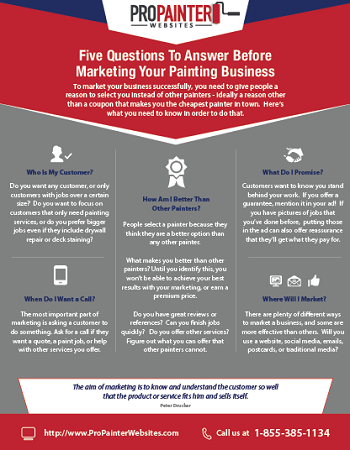Understand How Seasonal Problems Affect The Success Of Commercial External Paint And Learn The Perfect Periods To Assure Lasting End Results For Your Task
Understand How Seasonal Problems Affect The Success Of Commercial External Paint And Learn The Perfect Periods To Assure Lasting End Results For Your Task
Blog Article
Written By-Ford Rodriquez
When you're planning a business external painting project, seasonal factors can make or break your results. interior painting hobart 'll wish to think about how temperature and moisture effect paint application and drying times. Picking the appropriate season can ensure your paint sticks appropriately and lasts longer. Yet which periods are absolutely the most effective for this sort of work? Allow's discover the crucial elements that can affect your task's success.
The Influence of Temperature Level on Paint Application
When you're preparing a commercial external paint task, the temperature level can considerably impact exactly how well the paint sticks and dries out.
Preferably, you intend to paint when temperature levels range between 50 ° F and 85 ° F. If it's as well cool, the paint might not treat correctly, bring about concerns like peeling or cracking.
On the other side, if it's too warm, the paint can dry out as well rapidly, stopping proper attachment and resulting in an unequal surface.
You must also take into consideration the moment of day; early morning or late afternoon uses cooler temperatures, which can be much more positive.
Always examine the maker's referrals for the particular paint you're using, as they usually offer advice on the ideal temperature variety for optimum results.
Moisture and Its Effect on Drying Times
Temperature level isn't the only ecological variable that influences your commercial outside painting task; moisture plays a considerable function as well. High moisture degrees can decrease drying out times drastically, impacting the total top quality of your paint job.
When the air is filled with dampness, the paint takes longer to heal, which can cause concerns like poor attachment and a greater risk of mold growth. If look at these guys on a particularly moist day, be gotten ready for prolonged delay times in between layers.
It's essential to keep track of regional climate condition and strategy appropriately. Preferably, go for humidity levels between 40% and 70% for optimal drying out.
Keeping these factors in mind ensures your task stays on track and provides a long-term finish.
Best Seasons for Commercial Outside Painting Projects
What's the most effective season for your business external painting tasks?
Spring and early autumn are generally your best bets. Throughout these seasons, temperatures are mild, and moisture levels are often reduced, creating suitable conditions for paint application and drying.
Avoid summertime's intense heat, which can create paint to completely dry as well quickly, bring about poor adhesion and coating. In a similar way, wintertime's cold temperature levels can impede proper drying and treating, taking the chance of the durability of your paint job.
Go for days with temperatures between 50 ° F and 85 ° F for optimal results. Remember to inspect the local weather report for rain, as damp problems can ruin your project.
click to read around these factors ensures your paint task runs efficiently and lasts longer.
Conclusion
To conclude, planning your business external painting jobs around seasonal factors to consider can make a substantial difference in the end result. By scheduling job during the ideal temperatures and humidity levels, you'll guarantee better attachment and drying times. Keep in mind to watch on neighborhood weather report and pick the right time of year-- springtime and early autumn are your best options. Taking these steps will help you accomplish a resilient and expert coating that lasts.
